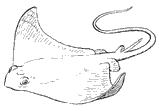Lincoln's Secret Weapon
|  |
Student Handout |
Dive, Dive, Dive

You and three friends have just won a five-day diving trip to the Caribbean. In three days, how many dives and at what depth can your team safely do? Use the guidelines and diving table to select a profile that will allow the most diving time with the least risk.
Procedure
Look at the Must Do List on your Let's Go Diving
student handout. You and your friends have decided these things absolutely have to be done during your five-day stay on the island. Now read your Planning Your Profile student handout.
The Diving Guidelines outline the things you should think about when planning your daily dive schedules, known as profiles. The Dive Schedule tells you what has already been planned. The Diving Table shows you how many gas points you accumulate for short, medium, and long dives at different depths. It also tells you how many gas points you lose while on the surface.
Your assignment is to design as many "safe" daily diving profiles as you can during your vacation. Look at what has already been planned on the Dive Schedule, combine that with everything you want to do on your Must Do List, and then plan how you will get everything done without accumulating unsafe levels of dissolved gas in your body. Use the Diving Table to learn how many dissolved gas points are accumulated on each dive, subtract one gas point for each hour of rest, and then calculate your total gas points for that day. Remember to use the Diving Guidelines while you are planning your dives.
Questions
Write your answers on a separate sheet of paper.
With all activities, there is always the chance that something can go wrong. Planning without a safety margin can be risky. Look at your different profiles. Which one involved the least amount of dissolved gas? Which one involved the most? Which ones would you choose to do? Why? Increasing pressure with depth and extending the dive time are the two main factors that determine the amount of gas that your body absorbs when diving. How are these factors evident in the dive tables?

|

